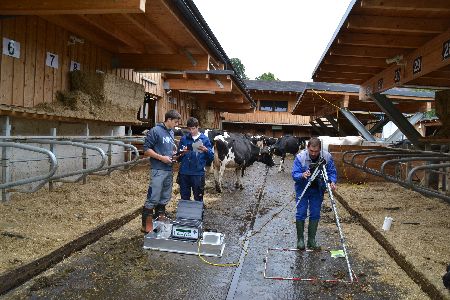Be able to define technical and procedural optimization options adapted to practice (slide blade materials, settings, etc.) and present them in detail.
In a preliminary test, the effect of rubber valve blades mounted on the metal flaps of the valve system could be visually evaluated. It was found that the cleaning quality of the walkway surface could be significantly improved due to the precise adjustment of the rubber scraper blades. In the current project, potential for improvement is being discussed with selected manufacturers and individual suggestions are being examined and tested in practice.
Initiate innovation solutions among manufacturers. Through the planned exchange of knowledge and data, it should be possible to implement suggestions for improvement directly and immediately.
Be able to derive and develop advisory recommendations for the emission-related optimization of manure removal systems (slider manure removal).
With the very practical approach of the research project, simple and practical solutions for reducing emissions can be derived and published in suitable advisory publications if the results are appropriate.







